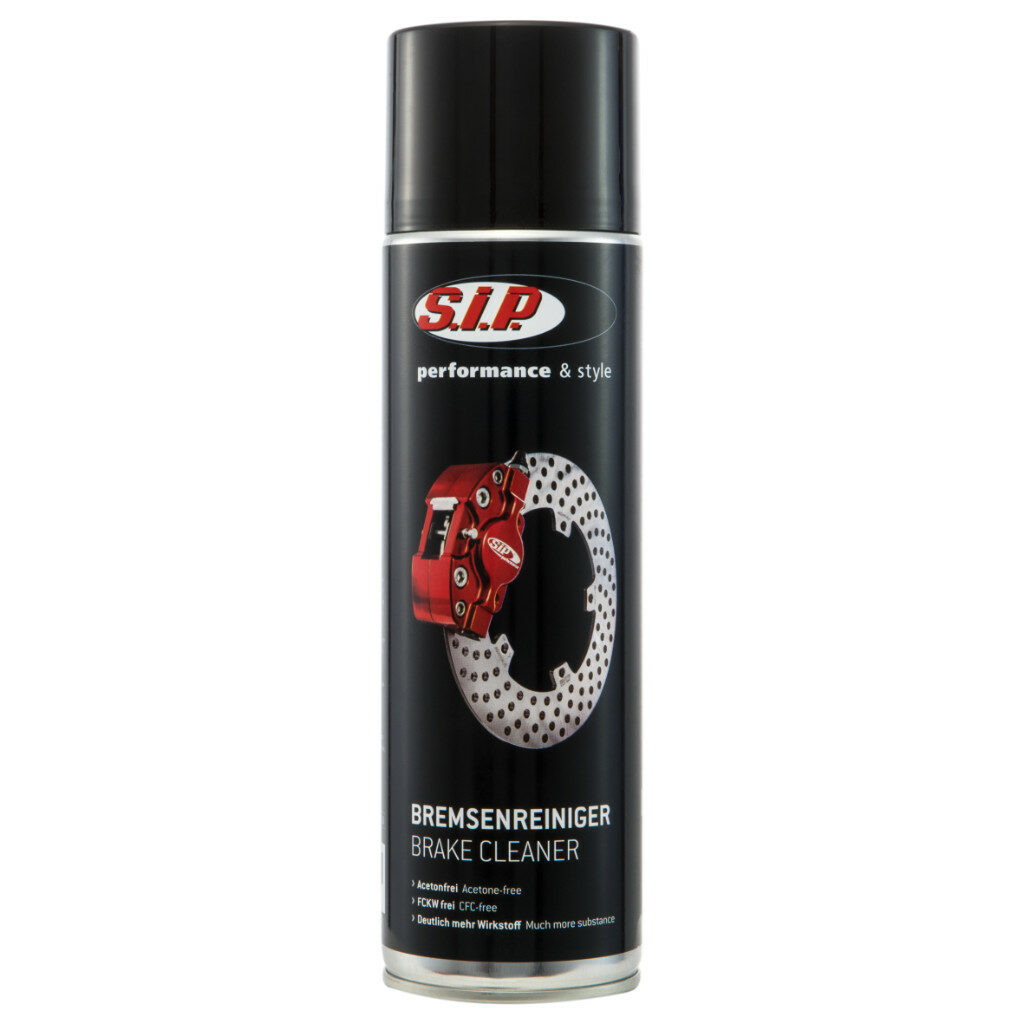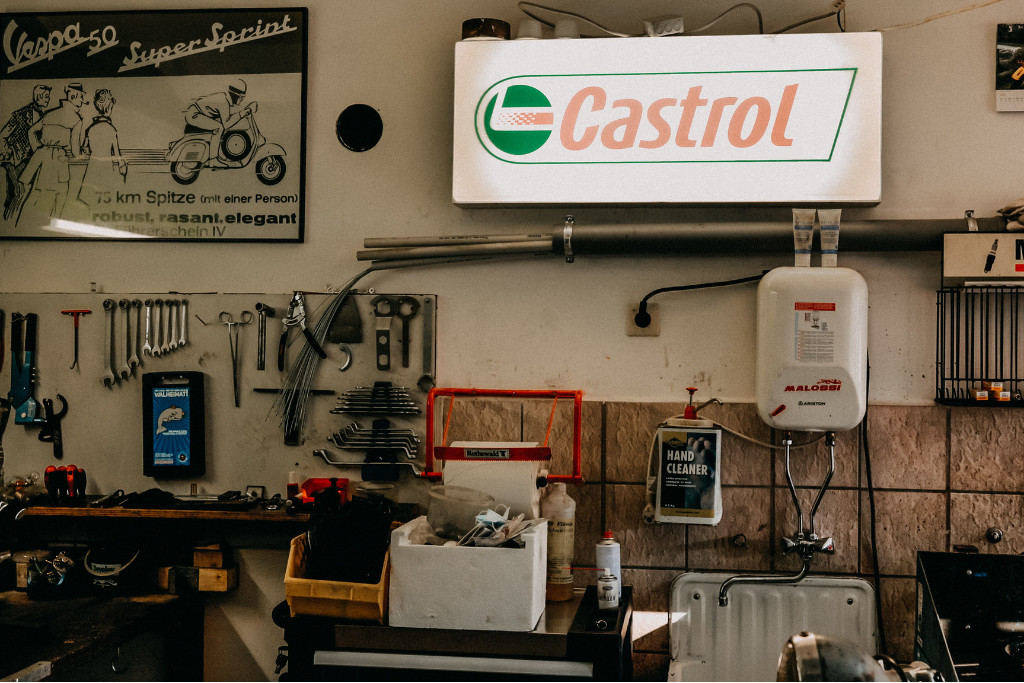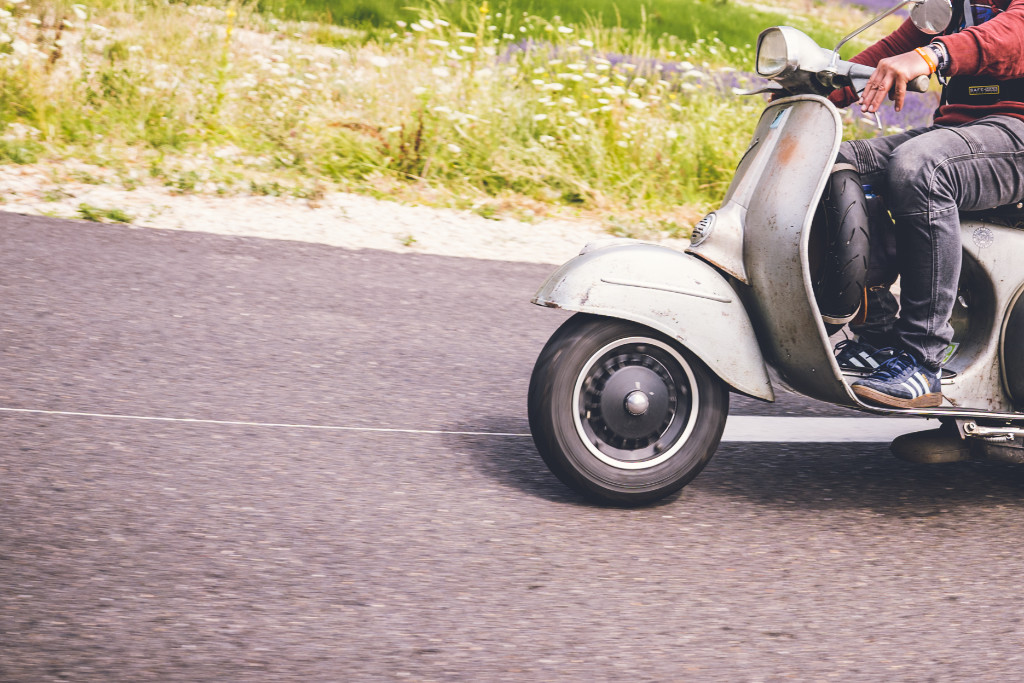They are among the five most common defects for which the TÜV sticker is refused: The brakes. But it is not only the inspectors who should take a close look at the brakes. Vespa riders should also regularly check that the brakes are working properly. After all, it should be possible to bring the scooter to a halt safely and without falling in any situation. At the same time, nothing is more annoying than stopping in front of the next ice cream parlour with squeaking brakes.
How the brakes work
If you always want to be aware of the road safety of your Vespa, the brakes should be checked regularly. Older Vespa models have a drum brake. The brake drum is firmly connected to the wheel or rim. When the brake is applied, the brake shoes are spread and pressed against the drum. This reduces the speed. A major problem of this now obsolete technology is that it achieves a significantly lower braking performance than disc brakes.
For this reason, disc brakes have been introduced on all newer models. The brake caliper or its piston grips the brake disc and thus reduces the speed.
Checking the brakes
The functioning of the drum brake in particular shows that regular brake maintenance is indispensable. On the one hand, the brake shoes can be so worn that no or only a reduced braking effect is achieved. On the other hand, so-called vitrification of the brake shoes can occur. Heat causes a vitrified layer to form on the brake shoes, which means that no more friction can take place. The limit for worn brake pads is about 1.5 mm. If the pure pad thickness is below this value, the pads should be replaced.
In the case of glazed pads, the Vespa brakes should be replaced immediately for safety reasons.
In the case of light soiling, it may also be sufficient to clean the pads with brake cleaner. In case of doubt, however, replacement should be preferred to cleaning.

Removing the brake shoes
To do this, first remove the cover of the brake drum and drive out the safety cotter pin. Then remove the retaining cage and loosen the nut underneath. Now the brake shoes, which are fixed with a circlip, can be removed.
When replacing the brakes, some copper paste should be used on the moving parts to prevent the squeaking mentioned at the beginning. The installation of the remaining parts is done in reverse order. The retaining rings of the shoes should also be replaced. In many cases, these are no longer secure due to the extraordinary load.
Replacing the brake pads
The braking effect of the disc brakes on the newer models also deteriorates over time due to worn brake pads. Regular maintenance should therefore be carried out here as well. To access the pads, first remove the front wheel and, depending on the model, the brake calliper. Then drive out the pin that is fixed with a circlip. If the pads cannot be removed yet, the brake piston must first be carefully pushed back. This also makes it easier to reinstall the new pads. Here, too, a little copper paste on the back of the pads can be helpful in preventing possible squeaking noises.
In addition to the brake caliper and the brake disc, maintenance can also affect the brake fluid. Since the brake fluid binds moisture, water is absorbed over the years. This also reduces the braking effect. Therefore, it is always advisable to change the fluid during maintenance. The new fluid should ideally meet the DOT 4 standard in order to meet modern requirements for braking efficiency. Afterwards, the brake system should be bled professionally. Special bleed valves are provided for this purpose.

Working on the brakes: experience required
In conclusion, it can be said that working on the different types of brakes requires some experience. Especially with modern disc brakes, work must be done very carefully and cleanly. Oil-based sprays should never be used for maintenance or replacement, as lubrication on the pads is life-threatening. Great care must also be taken when replacing the brake shoes.
With a little training and interest, however, replacing or servicing the brakes on a scooter is not witchcraft.
After maintenance, nothing stands in the way of the next Vespa tour in bright sunshine.



